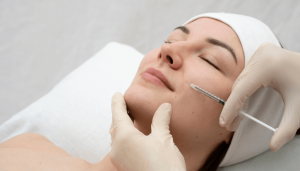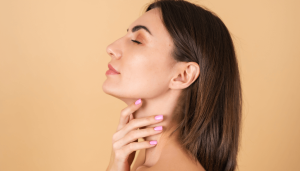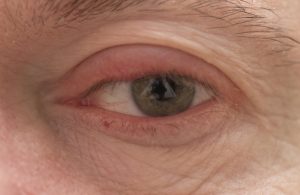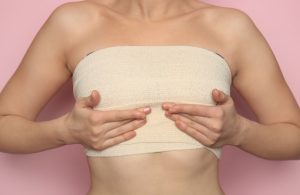Pigmented, vascular, structural, and mixed, these are the types of dark circles. But what type are yours? If you want to know, this blog is for you.
Dark circles under the eyes are one of the most common skin concerns. They can make you look tired, stressed, or older, even when you feel fine. But not all dark circles are the same; their colour, cause, and even how they react to light can vary.
In this guide, we’ll explain the different types of dark circles, what causes them, simple ways to test which type you might have, and the most effective treatment options.
Understanding Dark Circles Under Eyes
The skin under your eyes is much thinner than the rest of your face. Because of this, tiny blood vessels and natural colour changes show more clearly. This is why dark circles often make people look tired, even when they are not.
Dark circles are not the same as eye bags. Eye bags usually happen when the skin under your eyes swells or sags, while dark circles are more about colour or shadows in the area. Some people may have both at the same time, which makes the under-eye area look even more tired.
Here Are 4 Main Types of Dark Circles
Not all dark circles are the same. They can look different depending on what is happening under your skin. Here are the main types:
Pigmented (Brown) Dark Circles
- Appearance: Brown, grey, or yellow-brown skin under the eyes.
- Cause: Extra melanin in the skin, often from genetics, sun exposure, or repeated rubbing from allergies.
- These are more common in people with medium to darker skin tones.
Vascular (Blue/Purple) Dark Circles
- Appearance: Blue, purple, or reddish shadows under the eyes.
- Cause: Thin under-eye skin that shows blood vessels more clearly, often linked with poor blood flow or tiredness.
- They can look worse when you’re lacking sleep or after long screen time.
Structural (Shadow/Hollow) Dark Circles
- Appearance: Dark, shadowy hollows under the eyes.
- Cause: Natural facial anatomy, loss of fat or collagen with age, or puffiness that casts a shadow.
- Structural dark circles commonly appear when people get older or if their eye sockets are naturally deep-set.
Mixed Dark Circles
- Appearance: A mix of brown, blue, or shadowy tones under the eyes.
- Cause: More than one factor, like pigmentation plus volume loss.
- This type often needs a combination of treatments for best results.
How Do I Know What Kind Of Dark Circles I Have?
It’s not always easy to tell what kind of dark circles you have just by looking in the mirror. Here are a few simple checks you can do at home to understand them better:
Stretch Test
How it works: Try to pull the skin under your eye sideways, very gently.
What it shows:
- If the darkness moves with the skin, it’s likely pigmented.
- If the colour fades or lightens, it’s likely vascular.
- If the shadow looks lifted when the skin is stretched, it may be structural.
How it works: Shine a light from above, then from the front.
What it shows:
- If the darkness changes a lot depending on the angle of light, it’s often structural (caused by shadows).
- If the colour stays the same no matter the light, it’s more likely a pigmented or vascular type.
For Mixed Dark Circles
Sometimes you may notice more than one result from these tests. That means your dark circles are mixed, caused by more than one factor.
Here’s a tip: These at-home tests give clues, but for a clear answer, a skin or aesthetic specialist can help identify the type and suggest the best treatment.

Ready to achieve your aesthetic goals?
- CQC-Registered Clinic with Nationally Recognised Leadership
- Over a Decade of Surgical & Aesthetic Expertise
- Personalised treatment plans tailored to your needs
What are the Common Causes of Under Eye Dark Circles?

Dark circles rarely come from just one reason. In most cases, several factors work together to make the under-eye area look darker. Here are the most common ones:
When you don’t get enough rest, blood vessels under the eyes can widen, making the skin look darker and tired.
As skin gets thinner with age, blood vessels and hollows under the eyes become more noticeable, creating shadows and dark tones.
Some people naturally inherit a tendency to develop dark circles, which may appear even at a young age.
Allergies can make the eyes itchy and swollen. Frequent rubbing damages delicate skin and increases darkness over time.
When your body lacks water, the skin under the eyes looks dull and sunken, making dark circles more obvious. Dehydration may also lead to sallow skin.
Too much sun increases melanin (pigment) production, which can cause the skin around the eyes to darken.
Medical Conditions & Medications
Issues like anaemia or the use of certain eye drops (for glaucoma, for example) can also lead to under-eye darkening.
Smoking, alcohol, stress, and poor nutrition all affect circulation and skin health, making dark circles worse.
How to Treat Dark Circles? All Options Explained
If you want to get rid of under-eye dark circles, here are all the options for you.
Professional Treatments for Dark Circles
Tear Trough Fillers, usually made of hyaluronic acid, are placed in hollow tear troughs to restore lost volume. This reduces shadowing and instantly improves the appearance of structural dark circles, giving a fresher, well-rested look.
Chemical peels are made of ingredients like glycolic or lactic acid that can lighten pigmented dark circles. They remove damaged skin cells, improve texture, and support cell turnover, making the under-eye area look more radiant.
Polynucleotides under the eyes repair damaged skin, improve hydration, and support tissue regeneration. They’re especially helpful for tired or stressed skin, reducing fine lines and making the under-eye area look plumper and healthier.
Exosomes are rich in growth factors that encourage healing and skin regeneration. When applied or injected, they repair cellular damage, boost collagen, and improve pigmentation, offering a powerful solution for stubborn dark circles.
This treatment uses tiny needles to create micro-channels in the skin, followed by platelet-rich plasma application. It stimulates natural collagen production, improves blood circulation, and rejuvenates tired or thin under-eye skin.
NeoGen Plasma uses nitrogen plasma energy to regenerate the skin from within. It improves collagen, tightens loose skin, and reduces wrinkles and pigmentation, making it a safe and effective treatment for stubborn dark circles.
UltraClear Laser Resurfacing
UltraClear is a new-generation fractional laser that resurfaces the skin while being gentle enough for the delicate under-eye area. It helps reduce pigmentation, fine lines, and uneven texture, leaving the skin clearer and firmer.

Ready to achieve your aesthetic goals?
- CQC-Registered Clinic with Nationally Recognised Leadership
- Over a Decade of Surgical & Aesthetic Expertise
- Personalised treatment plans tailored to your needs
At-Home Remedies for Different Types of Dark Circles
Compression with chilled compression spoons, or ice wrapped in a cloth over the eyes, can temporarily reduce puffiness and shrink visible blood vessels. It’s a quick fix for tired, swollen under-eyes.
Retinol Creams or Eye Serums
Retinol improves cell turnover and thickens delicate skin over time. Eye serums with retinol or gentle alternatives help fade fine lines and reduce the visibility of blood vessels.
Vitamin C helps brighten pigmented circles by reducing melanin, while peptides strengthen skin structure. Together, they repair under-eye damage and help the area look more refreshed and youthful.
Adequate Sleep & Hydration
Getting enough sleep and staying hydrated prevents fatigue-related vascular dark circles. Proper rest also improves circulation, making the under-eye area appear less dull and more energised.
Eating foods such as spinach and lentils prevents anaemia-related dark circles, while antioxidants protect skin from damage. A balanced diet supports skin health and reduces tired, dull under-eyes.
Daily use of sunscreen prevents pigmentation from getting worse under the eyes. Sunglasses and broad-spectrum SPF are essential for keeping the delicate under-eye area safe from sun damage.
Final Remarks
Dark circles can be frustrating, but understanding the type you have is the first step to treating them the right way. Whether they’re caused by pigmentation, visible blood vessels, shadows, or a mix of all three, there are safe and effective treatments available, both professional and at home.
If you want a quick fix for your dark circles, consult the experts at Yorkshire Skin Centre for best treatment.
If your dark circles keep bothering you, it’s always worth seeing a skin or aesthetic specialist who can give you a clear diagnosis and guide you to the best solution for brighter, healthier-looking eyes.
FAQs
1. What deficiency causes dark circles?
Dark circles can sometimes be linked to low iron, vitamin B12, or vitamin D. These help carry oxygen in the blood. If your body is low on them, your skin may look pale and tired.
2. Is caffeine or vitamin C better for dark circles?
Both can help, but in different ways. Caffeine reduces puffiness and improves blood flow, while vitamin C brightens skin and reduces dark pigment. Many good eye creams use both together.
3. How do I correct my dark circles?
First, find out what type of dark circles you have. Simple fixes include getting enough sleep, using sunscreen, and applying eye creams containing caffeine or vitamin C. For stronger results, treatments like laser, fillers, or exosomes may be needed.
4. What is the difference between vascular dark circles and pigmented dark circles?
Vascular dark circles look blue or purple because of blood vessels under thin skin. Pigmented dark circles look brown or grey because of extra melanin in the skin.



























